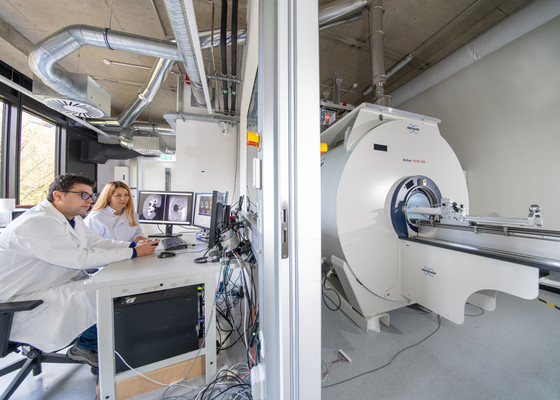Diamond Dust Could Offer New Contrast Agent Option for Future MRI Scans
Posted on 29 Apr 2024
Gadolinium, a heavy metal used for over three decades as a contrast agent in medical imaging, enhances the clarity of MRI scans by highlighting affected areas. Despite its utility, gadolinium not only accumulates in targeted tumor tissues but also disperses into surrounding healthy tissues, where it can remain for months to years, particularly in the brain and kidneys. The long-term impacts of this retention are still unclear, and gadolinium is known to cause several side effects. Consequently, the medical field has long been in search of a safer alternative. Now, an unexpected discovery made in a laboratory suggests that diamond dust, a carbon-based material, might serve as a viable, more tolerable substitute for gadolinium.
This breakthrough was achieved at the Max Planck Institute for Intelligent Systems (Stuttgart, Germany), where researchers initially used nanometer-sized diamond particles for an entirely different experimental purpose. To their surprise, these diamond particles exhibited unexpected brightness in an MRI experiment, shining even more brightly than the actual contrast agent, gadolinium. The experiment involved encapsulating 3 to 5-nanometer diamond particles in tiny drug-delivery capsules made of gelatin that were designed to burst upon heating, leveraging diamond dust's high heat capacity to trigger this reaction. Initially, the researchers included gadolinium to monitor the location of the diamond particles, intending to see if the diamond-enhanced capsules would heat more efficiently. However, they encountered issues with gadolinium leakage from the gelatin, similar to how it would leak out of the bloodstream into patient tissues during clinical use.

Upon deciding to proceed without gadolinium, they observed that the capsules still appeared surprisingly bright in the MRI images, indicating that the diamond dust could have better signal-enhancing properties than gadolinium. They found that, unlike gadolinium which diffuses everywhere, the diamond nanoparticles remained in the blood vessels, did not leak out, and later shone brightly in the MRI, similar to how they had in the gelatin capsules. Given these promising results, the researchers are optimistic about the potential of diamond dust in MRI applications. If further studies confirm its safety and efficacy, diamond dust could emerge as a groundbreaking contrast agent in future MRI procedures, offering a safer alternative to gadolinium.
“Why the diamond dust shines bright in our MRI still remains a mystery to us,” said Dr. Jelena Lazovic Zinnanti, a research scientist, who heads the Central Scientific Facility Medical Systems at MPI-IS. “I think the tiny particles have carbons that are slightly paramagnetic. The particles may have a defect in their crystal lattice, making them slightly magnetic. That’s why they behave like a T1 contrast agent such as gadolinium. Additionally, we don’t know whether diamond dust could potentially be toxic, something that needs to be carefully examined in the future.”
Related Links:
Max Planck Institute for Intelligent Systems




 Guided Devices.jpg)









